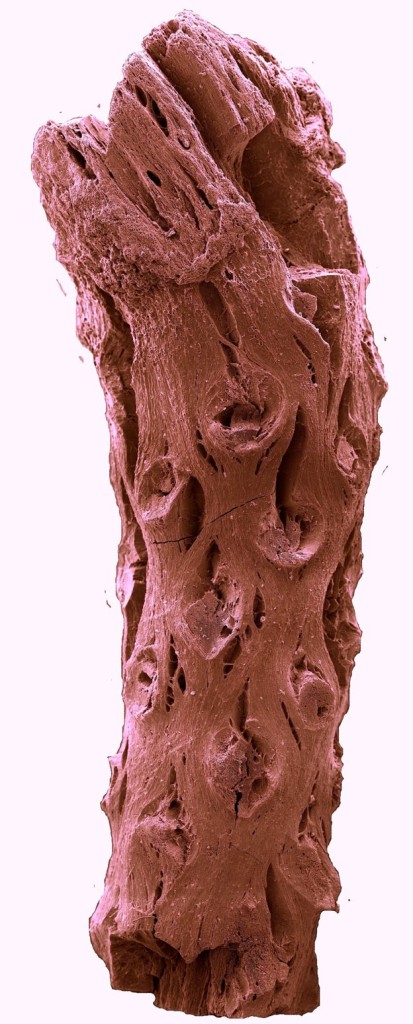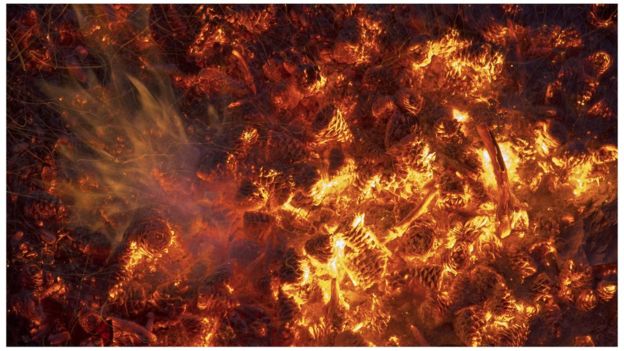Scientists have discovered the oldest-know fossil of a pine tree.The charred pine twigs date back 140 million years to a time when fires raged across large tracts of land.Pine trees now dominate the forests of the Northern Hemisphere.
The research suggests the tree’s evolution was shaped in the fiery landscape of the Cretaceous, where oxygen levels were much higher than today, fuelling intense and frequent wildfires.
“Pines are well adapted to fire today,” said Dr Howard Falcon-Lang of Royal Holloway, University of London, who discovered the fossils in Nova Scotia, Canada.
“The fossils show that wildfires raged through the earliest pine forests and probably shaped the evolution of this important tree.”
Serendipitous find: The specimens, which are described in Geology journal, were preserved as charcoal within rocks from a quarry.”It was only when I digested [the samples] in acid that these beautiful fossils fell out,” Dr Falcon-Lang told BBC News.
“They were sitting in my cupboard for five years before I actually worked out what was there.”
Plant oddities
The fossils are just a few mm long but probably came from trees resembling the Scots Pine that now cover large areas of Scotland.
Pines are well adapted to fire, containing inflammable deadwood that makes them burn easily.They also produce cones that will only germinate after being scorched, ensuring a new generation of trees is seeded after the fire has passed by and other vegetation has been destroyed.
Scientists have debated for many years why some trees seem to thrive on wildfires.
“One of the oddities about pine trees today is that they are one of the most fire adapted species on our planet,” explained Dr Falcon-Lang.
“These oldest pine fossils are preserved as charcoal, the product of fire, suggesting that the co-occurrence of fire and pines is something that’s very ancient, that goes back to the very origin of these first pine trees.”
Dr Falcon-Lang plans to return to the quarry this summer to recover more specimens.He hopes to find fossils of flowering plants, which were evolving at the same time as the ancient pines.
Taken from: Article By
Key: WFS,Riffin T Sajeev,Russel T Sajeev,World Fossil Society



 March 11th, 2016
March 11th, 2016  Riffin
Riffin 

 Posted in
Posted in  Tags:
Tags: 